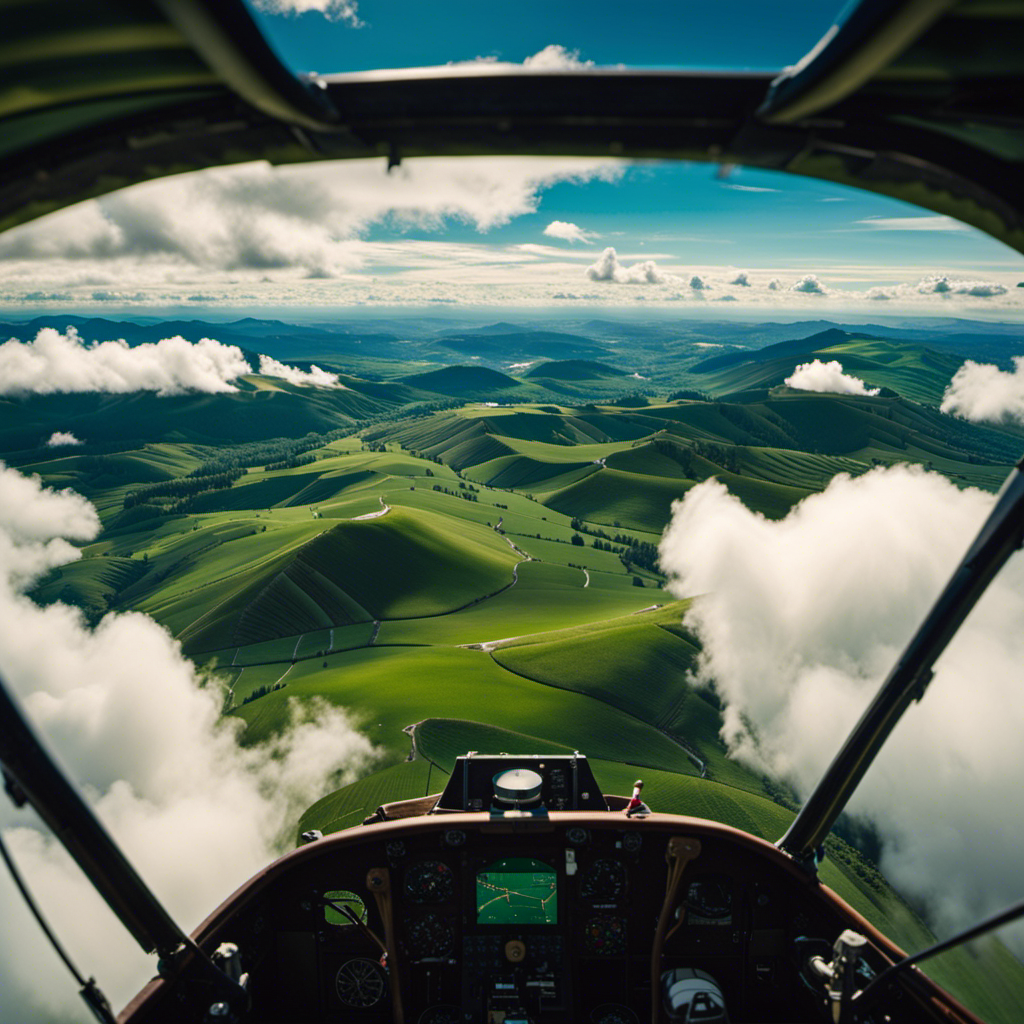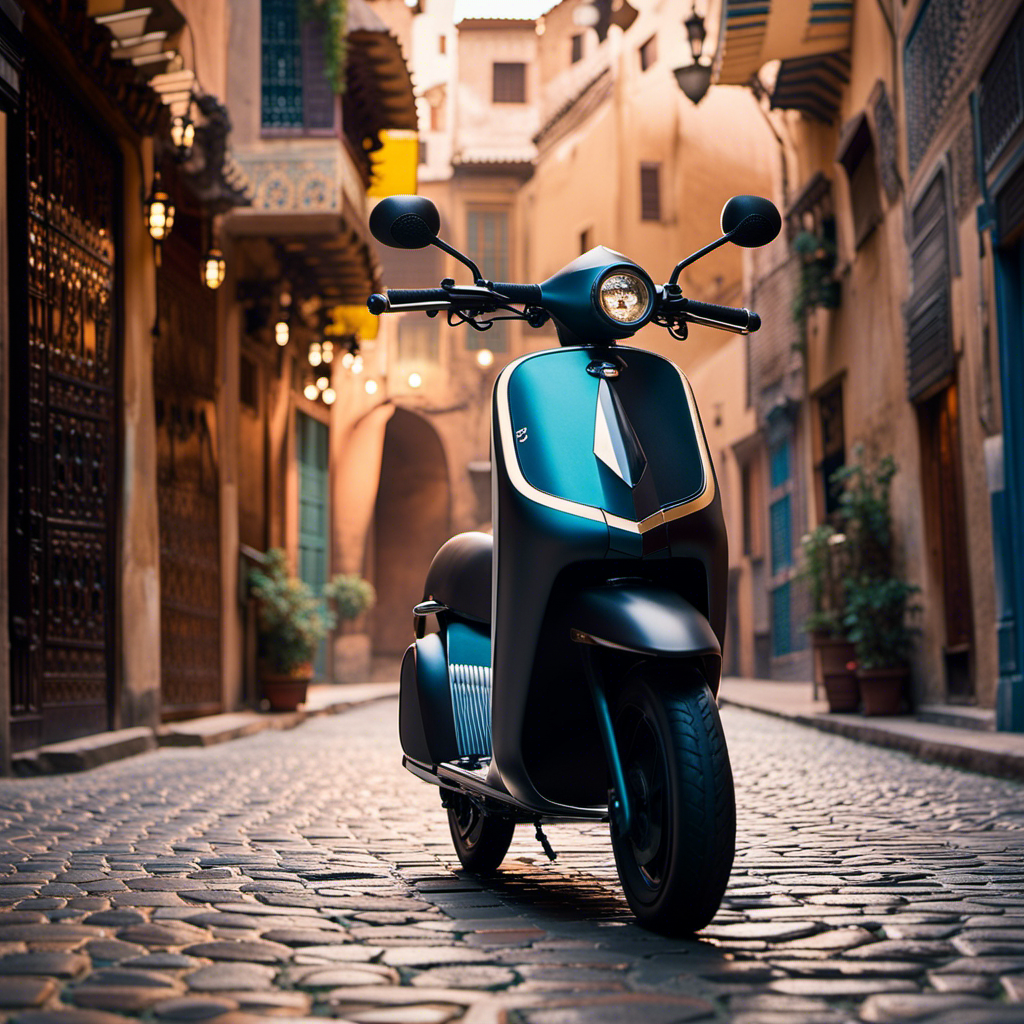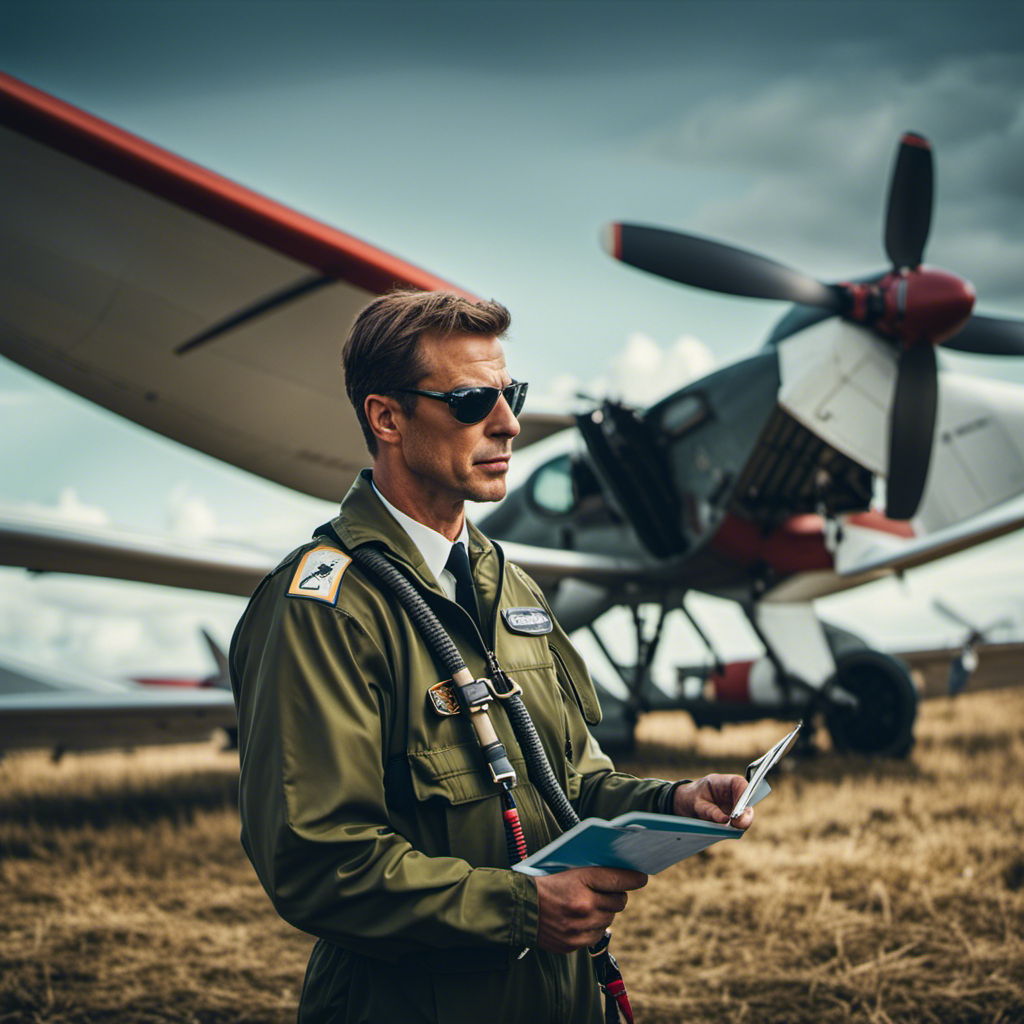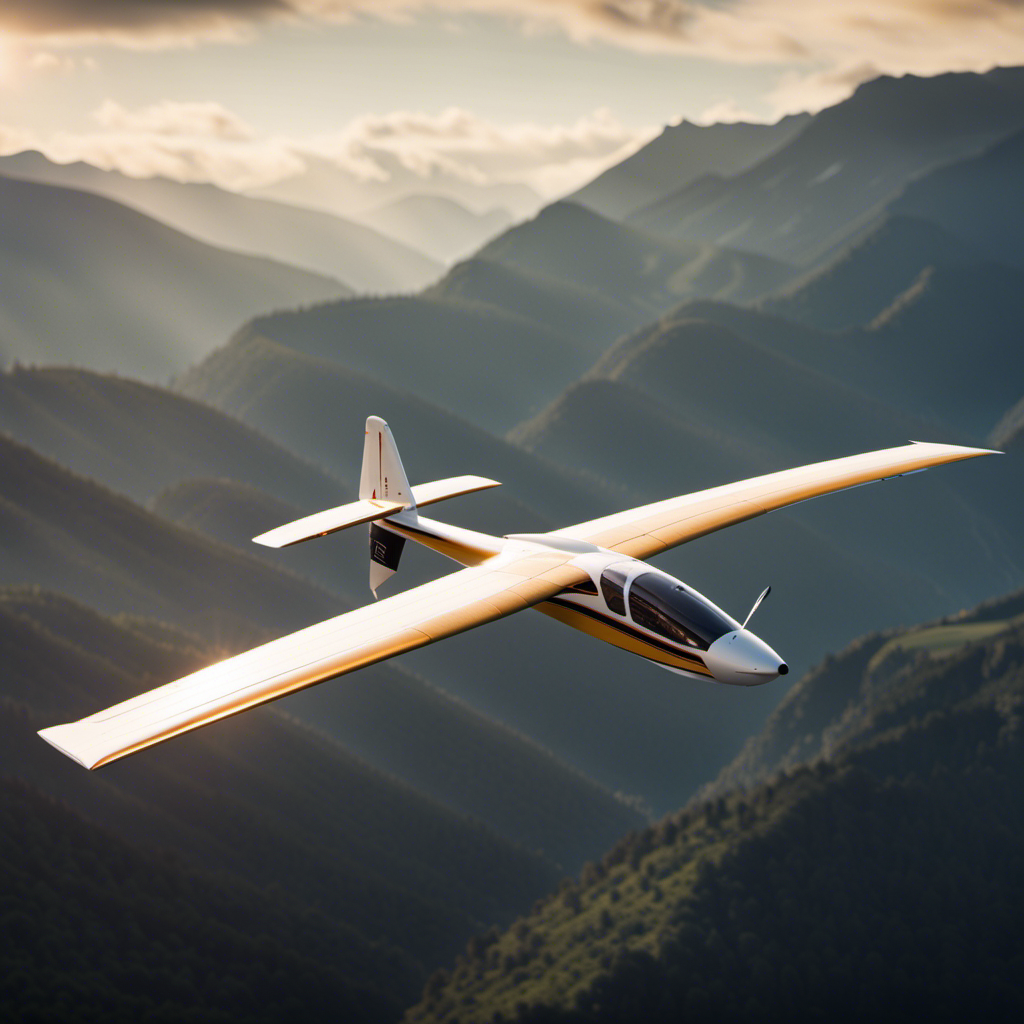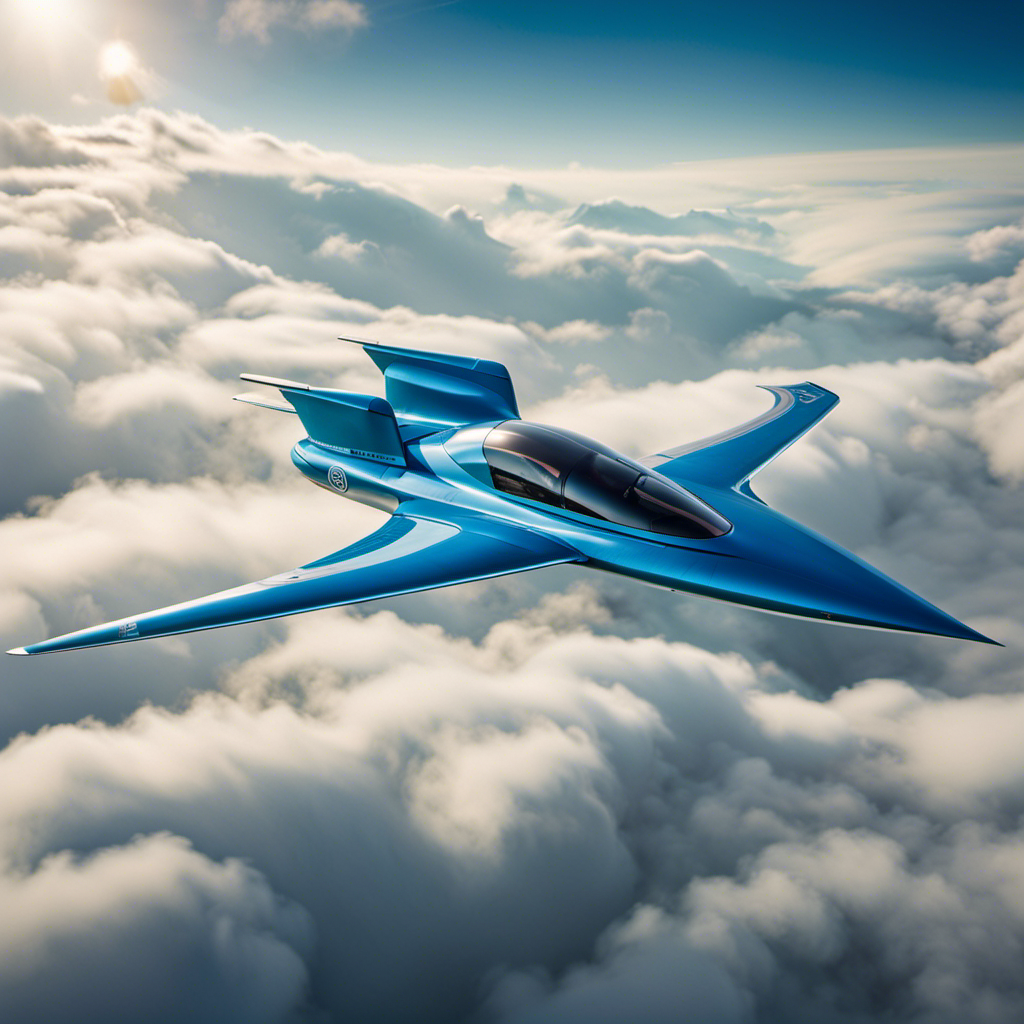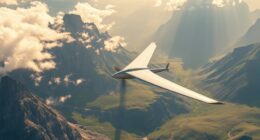Are you thinking about trying glider flying? Get ready for an unmatched adventure! This article will be your guide as we explore the thrilling world of gliding through the skies.
From the basics of soaring to advanced maneuvers and even gliding competitions, we’ll cover it all.
So, sit back, relax, and let’s dive into the exhilarating world of glider flight. You’re in for a wild ride!
Key Takeaways
- Glider flight is engineless and relies on soaring through the air.
- Launching methods include winch launching and aero towing.
- Glider flight offers a peaceful and immersive experience in the sky.
- Gliding requires proper training, safety precautions, and continuous learning.
The Basics of Glider Flight
Glider flight is a unique experience where you’ll have the opportunity to soar through the air without an engine. To embark on this thrilling adventure, you’ll need some essential glider flight equipment.
A glider, also known as a sailplane, is the primary equipment you’ll use. It is a lightweight, engineless aircraft designed for soaring. Other equipment includes a parachute, radio communication devices, and safety harnesses.
To get started, you can join gliding clubs and organizations that offer training and resources for aspiring glider pilots. These clubs provide access to gliders, experienced instructors, and a supportive community of fellow enthusiasts.
As you prepare for your first flight, there are several important factors to consider. These include weather conditions, flight planning, and safety procedures.
Preparing for Your First Flight
Before your first flight, it’s important to make sure you’re fully prepared.
One of the key steps in preparation is to go through a pre-flight checklist to ensure that everything is in order. This checklist includes inspecting the glider for any signs of damage, checking the control surfaces and instruments, and verifying that all necessary equipment is on board.
Additionally, choosing the right glider for your first flight is crucial. Factors such as your weight, experience level, and the weather conditions should be considered when selecting a glider. It’s essential to choose a glider that is appropriate for your skill level and provides a safe and comfortable flying experience.
Once you have completed the pre-flight checklist and chosen the right glider, you will be ready to move on to the exciting next phase of your glider flight: taking off and soaring into the sky.
Taking Off and Soaring
When it comes to launching methods in glider flight, there are a few options to consider.
One common method is the winch launch, where a cable attached to the glider is rapidly unwound to create upward force.
Another option is the aerotow launch, where a powered aircraft tows the glider into the air.
Once airborne, gaining altitude is crucial for a successful flight. This can be achieved by flying in areas with rising air currents called thermals, which pilots can locate using visual cues such as birds or cloud formations.
The thrill of silent flight is one of the most captivating aspects of glider flying. The absence of engine noise creates a sense of tranquility and allows pilots to fully immerse themselves in the beauty and serenity of the sky.
Launching Methods
Once you’re strapped into the glider, you’ll feel a sudden rush of excitement as the launching method propels you into the sky.
There are two common methods used to get gliders off the ground: winch launching and aero towing.
In winch launching, a powerful winch is used to rapidly unwind a cable attached to the glider, pulling it forward and upwards. This method provides a quick and exhilarating takeoff, propelling the glider to a safe altitude for soaring.
On the other hand, aero towing involves a powered aircraft towing the glider using a tow rope. This method allows for a more controlled ascent, as the tow plane gradually increases altitude while the glider is towed behind.
Both methods have their advantages and add to the excitement and anticipation of the flight.
As the glider gains altitude and finds thermals, the adventure truly begins.
Gaining Altitude and Finding Thermals
As you ascend and search for thermals, you’ll feel the thrill of gaining altitude in the glider. Gaining altitude techniques and detecting thermal currents are essential skills for glider pilots. Here are some key points to keep in mind:
- Look for signs of thermal activity, such as cumulus clouds or birds soaring in circles.
- Use your vario instrument to detect changes in vertical speed, indicating the presence of a thermal.
- Circle within the thermal to maximize your altitude gain.
- Pay attention to the wind direction and adjust your flight path accordingly to stay within the thermal.
By mastering these techniques, you’ll be able to gain altitude efficiently and stay aloft for longer periods of time.
Now, let’s explore the thrill of silent flight, where the glider becomes one with the air, allowing for a truly immersive and serene experience.
The Thrill of Silent Flight
As I reach higher altitudes and feel the rush of the wind, the thrill of silent flight becomes truly exhilarating. Gliding through the air without the hum of an engine creates a unique sensory experience that is difficult to replicate. The absence of noise allows you to fully immerse yourself in the serenity of the sky, as you become one with the elements. The silence amplifies the subtle sounds of nature, like the rustle of leaves and the distant calls of birds. It heightens your awareness of the surrounding landscape, as you glide gracefully above it. The table below summarizes the sensory experience of silent flight:
| Sensory Experience | Description |
|---|---|
| Sound | Absence of engine noise enhances the peacefulness of the flight |
| Sight | Clear view of the surroundings, providing a breathtaking panoramic vista |
| Touch | Feeling the wind against your skin, creating a sense of freedom and motion |
Transitioning into the subsequent section about ‘navigating the sky’, we explore the techniques used to maneuver and control a glider.
Navigating the Sky
When you’re navigating the sky in a glider, you’ll need to rely on your instruments and knowledge of the airspace. It’s essential to understand the dynamics of the paragliding adventure you’re undertaking, especially if you have prior skydiving experience.
Here are some key points to consider:
- Understand the weather conditions: Before taking off, it’s crucial to analyze the wind patterns, cloud formations, and any potential turbulence that may affect your flight.
- Plan your route: Familiarize yourself with the layout of the airspace and identify any restricted areas or obstacles that you need to avoid.
- Monitor your instruments: Keep a close eye on your altimeter, airspeed indicator, and variometer to maintain the optimal glide path and ensure safe navigation.
Transitioning into the next section, mastering these navigation skills paves the way for more advanced maneuvers, such as aerobatics and precision flying.
Aerobatics and Advanced Maneuvers
When it comes to aerobatics and advanced maneuvers in glider flying, there are several key points to consider.
First, looping and rolling are two fundamental maneuvers that require precise control and coordination.
Wingovers and spiral dives, on the other hand, are more advanced techniques that involve manipulating the glider’s wing and body position to create dynamic and thrilling maneuvers.
To perform these maneuvers safely and effectively, proper training and practice are essential.
This will help pilots develop the necessary skills and confidence to execute these maneuvers with precision and control.
Looping and Rolling
Looping and rolling in a glider can be an exhilarating experience. These advanced aerobatic techniques require precise control and understanding of the aircraft’s capabilities. Safety precautions are of utmost importance when attempting these maneuvers. Before attempting any aerobatics, it is crucial to receive proper training from a certified instructor. The table below highlights some key aerobatic maneuvers and the safety precautions associated with them.
| Aerobatic Technique | Safety Precautions |
|---|---|
| Loop | Check altitude, maintain positive G-force, avoid over-pulling the stick |
| Roll | Ensure proper entry speed, avoid excessive roll rates, stay coordinated |
| Immelmann | Maintain positive G-force, avoid excessive pitch or roll inputs |
| Split-S | Carefully manage energy, avoid low altitudes, maintain coordination |
As you gain confidence in looping and rolling, you can progress to more advanced maneuvers like wingovers and spiral dives. These maneuvers showcase the glider’s agility and offer an even more thrilling experience.
Wingovers and Spiral Dives
As you progress in your training, you’ll have the opportunity to try more advanced maneuvers like wingovers and spiral dives.
Wingovers are a thrilling maneuver where you use the glider’s wings to create a sweeping arc in the sky. By applying weight shift and precise control inputs, you can smoothly transition from one wing to the other, feeling the exhilarating rush of flying sideways through the air.
Spiral dives, on the other hand, involve steeply banking the glider and entering a descending spiral path. This maneuver requires careful coordination between speed control and control inputs to maintain a stable spiral. It’s an incredible sensation as you feel the G-forces and the glider spiraling downwards.
These advanced maneuvers require a solid understanding of flight dynamics and control techniques. So, as you gain more experience, you’ll start training for these exciting techniques.
Training for Advanced Techniques
Once you’ve progressed in your training, you’ll have the chance to learn and practice these exhilarating maneuvers.
Advanced techniques in glider flight open up a whole new world of possibilities in the sky. These advanced maneuvers require precise control and finesse to execute properly.
One example is the vertical S-turn, where you smoothly transition from a climb to a descent while maintaining a straight flight path.
Another advanced maneuver is the stall turn, where you intentionally induce a stall and then execute a 180-degree turn using rudder and aileron inputs.
These maneuvers not only test your skills but also enhance your understanding of aerodynamics and aircraft handling. As you become more proficient in these advanced techniques, you’ll gain a deeper appreciation for the artistry of glider flight.
Now, let’s move on to the vital topic of safety and emergency procedures.
Safety and Emergency Procedures
Before taking off in a glider, make sure you’re aware of the safety and emergency procedures. It is crucial to prioritize your safety and be prepared for any unforeseen circumstances. Here are four important safety precautions and emergency procedures to keep in mind:
-
Emergency Landings: Familiarize yourself with suitable landing areas in case of an emergency. Identify open fields, airports, or designated landing zones where you can safely touch down if necessary.
-
Pre-Flight Checks: Thoroughly inspect the glider before each flight. Check for any signs of damage, ensure proper functionality of instruments, and confirm the availability of emergency equipment such as parachutes and fire extinguishers.
-
Communication: Establish effective communication with ground personnel and fellow pilots. Maintain constant radio contact to relay any emergencies or receive important updates during flight.
-
Emergency Protocols: Understand and practice emergency procedures for various scenarios, including stall recovery, mid-air collisions, and equipment malfunctions. Regularly review these protocols to ensure they are fresh in your mind.
Glider Flight Training
When it comes to glider flight training, there are a few key points to consider.
First, finding a reputable flight school or club is crucial in order to receive proper instruction and guidance.
Next, understanding the basics of flight training, such as aerodynamics and flight controls, is essential for a successful learning experience.
Finding a Flight School or Club
Finding a flight school or club can be a great way to start your glider flying journey. When it comes to flight school options, it’s important to research and find one that suits your needs and goals. Look for schools that have experienced instructors, a good safety record, and a comprehensive training program.
Joining a glider club is another option, where you can learn from experienced pilots and enjoy the camaraderie of fellow enthusiasts. Clubs often have access to gliders and offer training programs as well.
Whether you choose a flight school or a club, both options provide the opportunity to learn from experienced pilots and gain the necessary skills to become a proficient glider pilot.
Now, let’s delve into the basics of flight training and what you can expect during your journey.
The Basics of Flight Training
During flight training, you’ll have the opportunity to develop essential skills and learn the fundamentals of piloting an aircraft. It’s an exciting journey that will pave the way for your future as a glider pilot.
Here are some key aspects of flight training:
-
Flight Simulations: Flight simulators are an invaluable tool in the training process. They allow you to practice various flight scenarios in a controlled environment, enhancing your decision-making skills and familiarizing you with the cockpit instruments.
-
Weather Conditions: Understanding weather patterns is crucial for safe flying. You’ll learn to interpret weather forecasts, analyze current conditions, and make informed decisions about whether it is safe to fly. This knowledge will enable you to navigate through different weather conditions with confidence.
-
Practical Flying: The heart of flight training lies in the practical flying lessons. Under the guidance of experienced instructors, you’ll take to the skies and learn to control the aircraft, perform maneuvers, and master the art of gliding.
As you progress through flight training, you’ll acquire the necessary skills and knowledge to obtain a glider pilot license, which we’ll explore in the next section.
Obtaining a Glider Pilot License
To obtain a glider pilot license, you’ll need to demonstrate your proficiency in various areas of aviation knowledge and skills.
As you embark on your glider pilot career, it’s crucial to understand the equipment necessary for glider flight. Glider flight equipment includes the glider itself, which is a lightweight aircraft without an engine, relying solely on natural forces to stay aloft.
Additionally, you’ll need a parachute for emergency situations, a radio for communication, and instruments to monitor altitude, airspeed, and other crucial flight parameters. These instruments help ensure safe and efficient flight operations.
Mastering the use of this equipment is essential to becoming a licensed glider pilot. With the necessary knowledge and skills, you’ll be ready to participate in gliding competitions and events, where you can showcase your flying abilities and compete against fellow pilots.
Gliding Competitions and Events
Attending gliding competitions and events offers a great opportunity to witness skilled pilots showcasing their talents. These events are not only exciting but also provide valuable insights into gliding techniques and glider performance.
As I watch the pilots maneuver their gliders through the sky, I am amazed by their precise control and graceful movements. They masterfully utilize various techniques such as thermaling, ridge soaring, and wave flying to maximize their glider’s performance and stay aloft for extended periods. It’s fascinating to see how they navigate the ever-changing currents and find the optimal lift to gain altitude.
These competitions and events serve as a reminder of the incredible capabilities of gliders and the skill required to harness their potential. As we delve further into the benefits of glider flight, we’ll explore the unparalleled sense of freedom and connection with nature that it offers.
The Benefits of Glider Flight
As a glider pilot, I’ve experienced firsthand the benefits of eco-friendly and sustainable aviation. Glider flight is powered by the natural elements, such as thermals and wind, making it an environmentally friendly form of aviation.
Glider flight also offers numerous physical and mental health benefits. It improves cardiovascular fitness, enhances concentration, and reduces stress levels. Soaring through the skies in a glider provides a unique sense of freedom and tranquility that can have a positive impact on overall well-being.
Moreover, glider flight is a personal growth and challenge opportunity. It requires continuous learning and skill development to master the art of soaring with grace and precision. The sense of accomplishment and satisfaction that comes from successfully navigating the skies using only the forces of nature is truly unparalleled.
Eco-Friendly and Sustainable Aviation
Flying in a glider is an environmentally-friendly way to experience aviation. Here’s what you can expect when it comes to sustainable aviation and reducing carbon emissions:
- Gliders are powered by the natural elements, such as wind and thermals, which means they don’t rely on fossil fuels or emit harmful emissions.
- Glider flight promotes sustainable aviation practices by prioritizing energy conservation and reducing carbon footprint.
- Gliders have a minimal impact on the environment due to their silent operation and lack of engine noise, making it a peaceful and serene experience.
By choosing glider flight, you not only get to enjoy the thrill of soaring through the sky, but you also contribute to the preservation of our planet. This sustainable form of aviation offers a unique and eco-friendly way to explore the skies while minimizing our carbon footprint.
Transitioning to the subsequent section about ‘physical and mental health benefits’, glider flight also provides numerous advantages beyond its environmental impact.
Physical and Mental Health Benefits
By engaging in glider aviation, you’ll discover a range of physical and mental health benefits that contribute to your overall well-being.
Glider flying requires physical effort, as you’ll be maneuvering the controls and maintaining balance throughout the flight. This physical activity helps improve your cardiovascular fitness, strength, and endurance.
Additionally, the sensation of soaring through the air promotes mental clarity and relaxation. As you glide silently through the sky, you’ll experience a sense of serenity and peace that can alleviate stress and anxiety.
The combination of physical exertion and mental relaxation provides a unique and holistic experience that enhances your physical well-being and mental clarity. These benefits make glider aviation an excellent choice for individuals seeking to improve their overall health and well-being.
Transitioning to the next section, glider flying also offers opportunities for personal growth and challenge.
Personal Growth and Challenge
Engaging in glider aviation offers opportunities for personal growth and challenge that can greatly enhance your overall well-being. Glider flying is not just about the thrilling sensation of being airborne; it is also a journey of self-discovery. As you soar through the skies, you will inevitably confront and conquer your fears.
The initial trepidation of leaving solid ground behind gradually transforms into a sense of empowerment and accomplishment. Overcoming the fear of heights or the fear of the unknown instills a newfound confidence that transcends into other aspects of life.
Glider aviation pushes you to step outside of your comfort zone, fostering personal growth and resilience. It teaches you to trust yourself, make quick decisions, and adapt to changing conditions. These invaluable life skills contribute to your overall personal development.
Transitioning into the subsequent section about ‘tips for a memorable glider flight experience’, it is essential to prepare mentally and physically for this exhilarating adventure.
Tips for a Memorable Glider Flight Experience
To have a memorable glider flight experience, make sure you’re wearing comfortable clothing and shoes.
Glider flight photography is a fantastic way to capture the breathtaking views from the sky. To ensure the best results, it’s essential to have the right equipment.
A DSLR camera with a wide-angle lens is ideal for capturing the expansive landscapes and the sense of freedom that glider flight offers. Additionally, a sturdy tripod can help stabilize your shots, especially when turbulence is present.
Remember to bring extra memory cards and batteries, as you wouldn’t want to miss out on any photo opportunities. Lastly, don’t forget to check with your glider flight operator for any specific guidelines or restrictions regarding photography equipment.
Frequently Asked Questions
How long does it take to become a certified glider pilot?
To become a certified glider pilot, it generally takes about a year. The glider pilot certification process involves ground training, flight instruction, and passing written and practical exams.
Can I bring my own personal items on a glider flight?
Sure, I can bring my personal belongings on a glider flight, but it’s not like I have much space to store them. Safety regulations prioritize minimalism, so I’ll have to pack light.
Are there any age restrictions for glider flights?
There are age restrictions for glider flights due to safety regulations. The minimum age varies depending on the glider club and country, but it is typically around 14-16 years old.
What kind of weather conditions can affect glider flights?
Thermal updrafts and wind shear are two weather conditions that can affect glider flights. Thermal updrafts are warm rising air currents that gliders use to gain altitude, while wind shear is a sudden change in wind direction or speed that can be dangerous for gliders.
Can I take pictures or record videos during a glider flight?
Sure, you can snap pics and record videos while soaring in a glider. Just make sure to secure your equipment properly and be mindful of the weight restrictions. Enjoy capturing the breathtaking views!
Conclusion
In conclusion, glider flight is an exhilarating and unique experience that allows you to soar through the sky with the freedom of a bird. With proper training and preparation, you can learn to navigate the air currents and perform advanced maneuvers.
One interesting statistic to note is that glider flight has a remarkably low accident rate, with only 0.27 accidents per 100,000 flight hours. This highlights the safety and reliability of this form of aviation.
So don’t miss out on the opportunity to experience the thrill of glider flight for yourself!
With a heart that soars as high as the skies, Aria, affectionately known as “Skylark,” is the driving force behind Soaring Skyways. Her journey into the gliding world began as a young dreamer gazing up at the soaring birds, yearning to experience the weightlessness and freedom they embodied. With years of experience both in the cockpit and behind the scenes, Aria’s commitment to the gliding community is unwavering.
